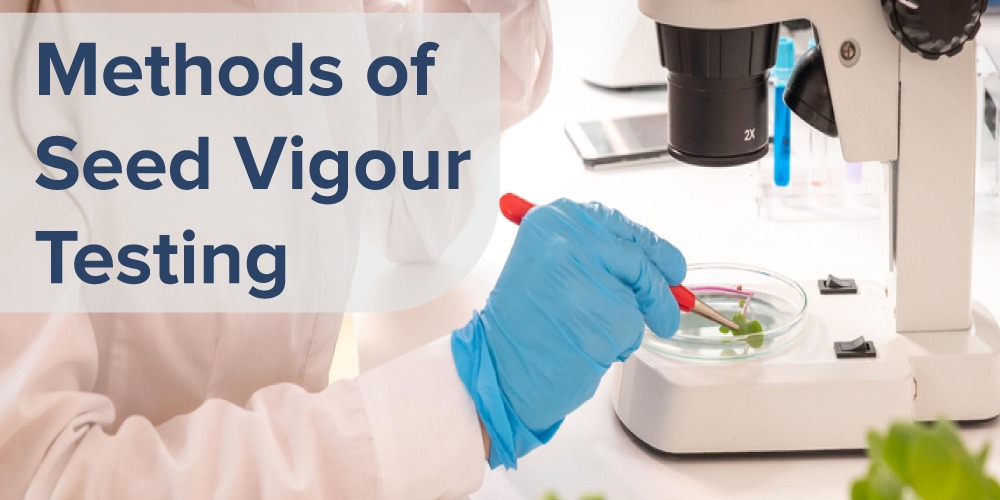Importance of Seed Vigour Testing
Seedling establishment is the first and most important phase in crop development, since it decides whether the harvest will be successful or not. Seed quality is a critical characteristic for crop output and food security, especially in the face of growing climate change uncertainty. In this blog, we describe about the importance of seed vigour and why it is essential for crop production to be both sustainable and profitable.
Seed from diverse sources may result in comparable high percentages of germination under ideal conditions. However, due to changes in vigour, these identical seeds under more demanding conditions in the field may have drastically different ability to grow plants. ‘The sum total of those qualities of the seed that define the potential degree of activity and performance of the seed during germination and seedling emergence,’ according to a commonly recognised definition.
What is Seed Vigour?
Seed vigour evaluation has several implications for the seed business, including fundamental monitoring of seed physiological potential during various stages of seed production and assistance for strategic decisions about the selection of high-quality seed lots to fulfil market demand. Seed vigour has the ability to improve crop resistance to biotic and abiotic challenges dramatically. This is critical for increasing agricultural yields and other seed-related businesses such as plant breeding, research and teaching, germplasm conservation, and seed exchange.
Importance of Seed Vigour Testing
Vigour testing not only determines the proportion of viable seed in a sample, but it also represents the seeds’ potential to generate normal seedlings under less-than-ideal or difficult growth circumstances, such as those seen in the field.
Methods of Seed Vigour Testing
Seed vigour is measured using a variety of procedures, including the cold test, accelerated ageing test, electric conductivity test, seedling vigour classification, and seedling growth rate. In addition, by categorising the pattern of stained seeds into good, medium, and poor quality, the tetrazolium (TZ test) may be employed as a vigour test.
Cold Test
By germinating the seeds in moist soils (70 percent water holding capacity) and incubating them at 5-10°C/41-51°F for a defined duration, the cold test replicates early spring field conditions. After the cold phase, the test is moved to a temperature that promotes germination (for example, 25°C/77°F in the case of sweet corn).
The indication of normal (desirable) vigour is determined by the percentage of seedlings in the lot that germinate well in the cold conditions. As an underline, seeds that germinate well in cold conditions are ‘more vigorous.’
Accelerated Aging Test (AAT)
The objective of this test is to stress seeds for varied durations of time at high temperatures (40-45°C/130-139°F) and near 100 percent relative humidity (RH), depending on the kind of seeds, followed by a germination test. High vigour seeds should be able to withstand high temperatures and humidity while still producing normal seedlings in the germination test.

Seedling Vigour Classification Test (SVCT)
This vigour test is a more comprehensive version of the usual germination test (SGT). The normal seedlings acquired from the SGT findings are further divided into two categories: ‘strong’ and ‘weak.’ Corn, garden beans, soybeans, cotton, peanuts, and other crops have all been subjected to this test.
Electrical Conductivity Test (EC)
The electrical conductivity (EC) test is a useful tool to assess if a seed batch has lost vigour. Simply said, four replicas of 50 seeds are weighed and then immersed in deionized water in a precise amount. At 20 degrees Celsius, the seeds are steeped for 24 hours. An electrical conductivity metre is used to measure the water’s leachate.
Do you like this blog? If you are interested in reading more blogs like these, visit the Gubba Blog


